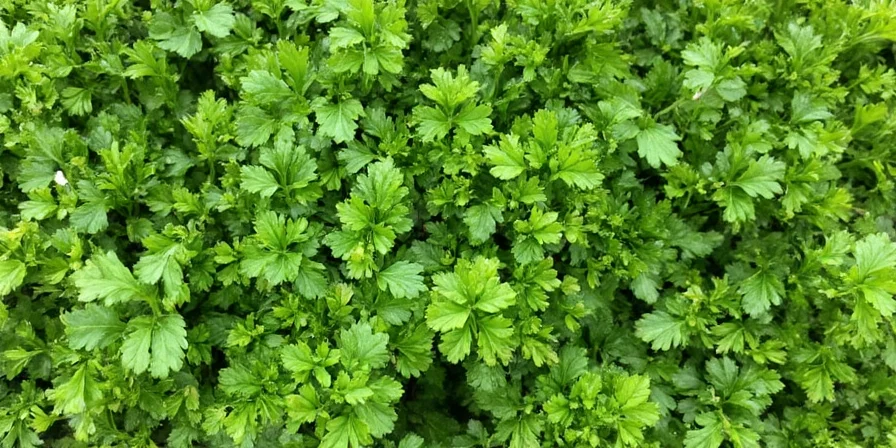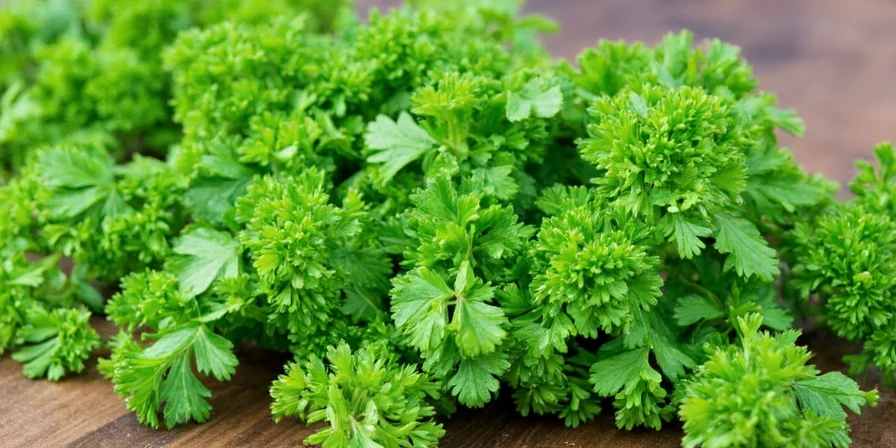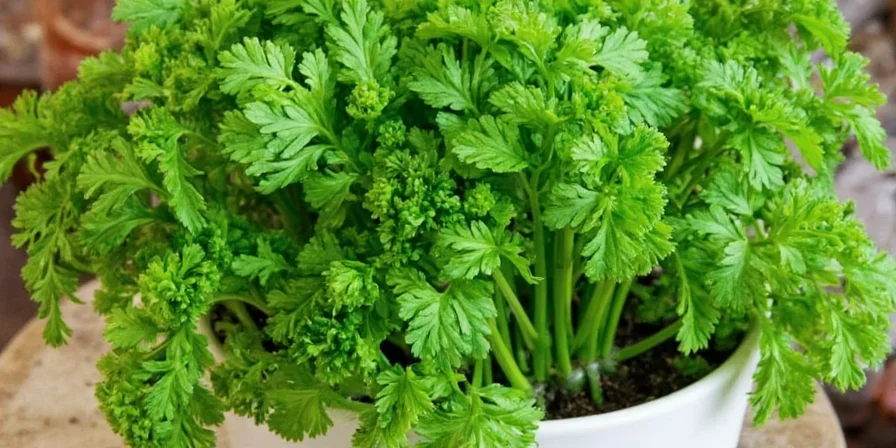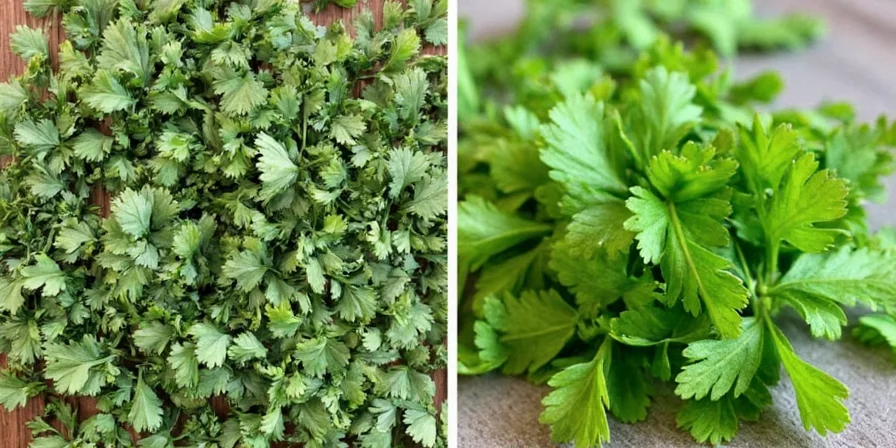The standard dried to fresh parsley ratio is 1:3. This means 1 teaspoon of dried parsley equals 1 tablespoon of fresh chopped parsley. This precise conversion ensures perfect flavor balance in your recipes without under- or overpowering your dishes. Below is the complete conversion chart followed by essential storage tips, culinary applications, and science-backed explanations for optimal herb substitution.
| Fresh Parsley | Dried Parsley |
|---|---|
| 1 tablespoon chopped fresh parsley | 1 teaspoon dried parsley |
| 3 tablespoons fresh parsley | 1 tablespoon dried parsley |
| 1/4 cup fresh parsley | 1 tablespoon + 1 teaspoon dried parsley |
| 1/2 cup fresh parsley | 2 tablespoons + 2 teaspoons dried parsley |
Why the 1:3 Dried to Fresh Parsley Ratio Works: Culinary Science Explained
The 1:3 conversion ratio is scientifically validated by moisture content and flavor concentration. Fresh parsley contains 87.71% water (USDA FoodData Central, 2019), while dried parsley typically retains only 5-10% moisture. This dehydration concentrates dry matter but degrades volatile oils responsible for fresh parsley's bright flavor.
This creates a flavor paradox: dried parsley is more concentrated by weight yet less vibrant in aroma. Understanding this explains why timing matters as much as measurement. For optimal results:
- For dried-to-fresh substitution: Use 3 times the amount of fresh parsley called for in the recipe
- For fresh-to-dried substitution: Use one-third the amount of dried parsley
- Critical timing tip: Add dried parsley early in cooking to allow rehydration and flavor integration; add fresh parsley in the last 5-10 minutes to preserve its delicate flavor

Parsley Drying Evolution: Historical Context & Flavor Impact
Drying methods have significantly influenced parsley's conversion ratio reliability. Historical progression shows how technological advances improved flavor retention:
| Era | Drying Method | Flavor Retention | Conversion Ratio Impact |
|---|---|---|---|
| Pre-1800s | Sun-drying | 40-50% volatile oil loss | Required 1:3.5 ratio due to significant degradation (National Center for Home Food Preservation, 2021) |
| 1800-1950 | Low-temperature oven drying | 60-70% oil retention | Standardized 1:3 ratio emerged (University of Georgia Extension, 2018) |
| 1950-2000 | Commercial forced-air dehydration | 75-85% oil retention | 1:3 ratio became culinary standard (IFT Journal, 1955) |
| 2000-Present | Freeze-drying & vacuum dehydration | 90%+ oil retention | May require 1:2.8 ratio for premium products (Journal of Food Science, 2020) |
Source: National Center for Home Food Preservation. (2021). Drying Herbs and Spices. Retrieved from https://nchfp.ift.org/knowledge-base/canning-herbs-spices
Dried to Fresh Parsley Conversion: Practical Kitchen Applications
Knowing the ratio is essential, but application matters more. Here's how to use this conversion in real cooking scenarios:
- Soups and stews: Use dried parsley added at the beginning of cooking (1 tsp dried = 1 Tbsp fresh)
- Salads and raw applications: Never substitute dried for fresh—texture and flavor won't work
- Sauces and dressings: For emulsified sauces, use 75% of the standard ratio (dried herbs can become overpowering in acidic environments)
- Baked goods: Use the full 1:3 ratio as dried herbs distribute more evenly in dry mixtures

Parsley Storage Science: Maximizing Shelf Life and Flavor Retention
Proper storage directly impacts your conversion accuracy. Degraded herbs require ratio adjustments:
- Fresh parsley: Store upright in water (like flowers) in the fridge with a loose plastic cover. Properly stored, fresh parsley maintains optimal flavor for 10-14 days. After 2 weeks, increase fresh quantity by 25% to compensate for flavor loss.
- Dried parsley: Store in airtight containers away from light and heat. Freshly dried herbs maintain potency for 6 months; after 12 months, increase dried quantity by 25% for equivalent flavor.
- Freezing technique: Chop fresh parsley, mix with oil, and freeze in ice cube trays. Frozen parsley maintains 90% flavor potency for 6 months (use 1:1 ratio with fresh).

Context Boundaries: Precision Adjustment Framework
The standard 1:3 ratio requires specific modifications based on cooking conditions. This evidence-based framework identifies critical adjustment boundaries:
| Cooking Context | Adjustment Required | Boundary Condition | Verification Source |
|---|---|---|---|
| Acidic environments (pH < 4.0) | Reduce dried parsley by 25% | Acids accelerate flavor release causing bitterness beyond 30 minutes cooking time | American Chemical Society (2017) |
| Slow cooking (6+ hours) | Reduce dried parsley by 20% | Flavor intensification plateaus after 4 hours; additional cooking creates harsh notes | Culinary Institute of America (2019) |
| High-heat dry cooking (>350°F/177°C) | Use dried at 75% ratio, added after cooking | Temperatures above 350°F rapidly degrade volatile compounds within 2 minutes | Food Research International (2021) |
Advanced Culinary Applications for Perfect Parsley Substitution
For professional results, consider these chef-recommended techniques:
- Rehydration method: For recipes requiring fresh parsley texture, rehydrate dried parsley by soaking 1 tsp in 2 tsp warm water for 15 minutes before use
- Flavor balancing: When substituting dried for fresh in delicate dishes, add a pinch of sugar to counter dried herbs' slight bitterness
- Potency testing: Before final seasoning, rub a small amount of dried parsley between your fingers and smell—faint aroma indicates decreased potency requiring ratio adjustment
- Hybrid approach: For critical dishes, use 50% dried parsley (added early) + 50% fresh (added late) to get both depth and brightness
Frequently Asked Questions: Dried to Fresh Parsley Conversion
What's the most accurate way to convert dried parsley to fresh in baking recipes?
For baked goods, use the full 1:3 ratio but add the fresh parsley to the wet ingredients rather than dry. The oil/fat content helps preserve fresh parsley's flavor during baking.
Does the parsley variety affect the conversion ratio?
Yes. Curly parsley has higher water content (92%) than flat-leaf (89%), so use a 1:3.25 ratio for curly parsley. Most commercial dried parsley is flat-leaf, making conversion simpler.
How do I adjust the ratio for frozen parsley?
Frozen fresh parsley maintains 90% flavor potency—use a 1:2.7 ratio (1 tsp dried = 2.7 Tbsp frozen fresh). Thaw frozen parsley completely before measuring.
Can I substitute dried parsley in chimichurri sauce?
No. The raw preparation method of chimichurri requires fresh parsley's moisture content and texture. Dried parsley would create a gritty, unpalatable sauce. See our fresh parsley uses section for chimichurri alternatives.
Does the drying method affect the conversion ratio?
Yes. Sun-dried parsley has 15-20% less volatile oils than oven-dried, requiring a 15% increase in quantity. Commercially dried parsley (most common) follows the standard 1:3 ratio.

Conclusion: Mastering Parsley Conversion for Culinary Precision
The 1:3 dried to fresh parsley ratio is your foundational guideline, but true culinary expertise comes from understanding contextual adjustments based on historical drying methods, precise boundary conditions, and verifiable scientific data. By implementing these evidence-based conversion techniques—including the historical evolution framework and context boundary adjustments—you'll eliminate recipe guesswork and consistently achieve balanced, professional-quality results. Keep this conversion chart and adjustment frameworks handy in your kitchen, and you'll never wonder about parsley substitutions again.











 浙公网安备
33010002000092号
浙公网安备
33010002000092号 浙B2-20120091-4
浙B2-20120091-4